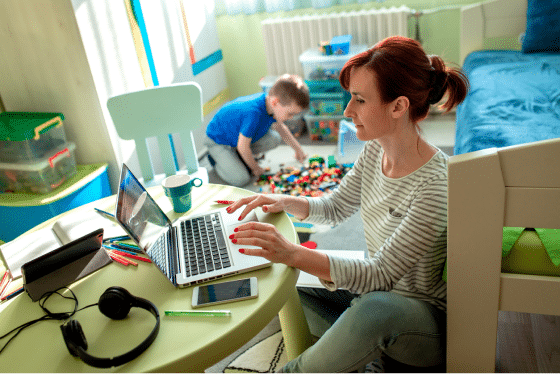What is parent engagement in schools and trusts?
Parent and carer engagement in schools and trusts describes how everyone works together to support a child or young person.
Parent engagement is typically driven by the school or trust, as teachers and leadership seek to effectively communicate with students’ families and involve them in what’s happening.
Most schools and trusts use technology like parent engagement apps to share information with parents and carers.

Why is communication with teachers and parents so important?
When parents and carers are looped in on their child’s education and progress, everyone benefits.
- Families know how to support their child’s educational development
- Parents and carers receive essential information (e.g. exam timetables)
- School staff have access to the insight they need to care for and teach students

Featured Guide
The secret to top-set parent communication: A guide for schools and trusts
Is there a better way to use parent engagement solutions? What if schools and trusts could use school messaging apps to build a community with families?
Download this free guide for the answers, plus insight into:
- Self-serve parent communication strategies
- When and how to keep families in the loop
- Building community through communication
- Game-changing engagement solutions
-
What are the barriers to communication between parents and teachers?
While effective parent engagement is key to securing good outcomes for students and protecting wellbeing, it’s not easy to achieve.
Fine-tuning a parent-teacher communication approach can help schools and trusts avoid issues like these.
-
When schools communicate across multiple platforms
Almost everyone has experienced communication burnout at one time or another, especially when keeping in the loop involves checking emails, texts, task notifications, WhatsApp messages, or any number of social media apps.
It makes sense that parents and carers feel the same way. Just because parent engagement apps allow schools and trusts to send texts, emails, or other direct messages via popular messaging platforms, doesn’t mean it’s the most effective way to communicate.
It’s also worth remembering that for most people, a text from school will set alarm bells ringing immediately. If it’s not urgent, consider sending messages via your communication tool.
-
When parents can’t keep track of school communication
Schools and trusts rely on their administrative teams to keep track of important documentation and data regarding students; , often by using a sophisticated Management Information System (MIS).
When the school sends through information about extra-curricular activities or an update about SEN support, parents and carers don’t have the luxury of a sophisticated online filing system.
If you’re not using your parent communications app as a centralised “info hub” for parents and carers, you’re relying on them to manage communications from their end. You’re inevitably going to lose some families in the mirk of bottomless email chains.
-
When teachers need to communicate with families who don’t speak English
School staff frequently need to communicate with parents and carers who may not be able to understand English.
As schools and trusts are well aware, those families expect the same level of communication and attention as any other.
If this is something your school or trust is struggling with, it’s worth exploring whether your parent engagement solution is being used to its full effect. Some systems include translation features, allowing school staff, parents and carers to communicate effectively despite language differences.
-
When communication with parents goes over the word-count
From trying to reassure families to toeing the line with safeguarding, it’s tempting to let families know the whole story and let them filter out the essentials.
But there’s a balance to be struck. Long messages can overwhelm readers and raise heart rates, as many will assume a 500+ word message means something’s gone horribly wrong. As a general rule, keeping messages on the shorter side makes for better communication.
It’s also a good idea to use simple, straightforward language wherever possible. This makes communication more accessible for people who aren’t fluent in English or have lower literacy skills.
Parent communication app
Glossary Understand the tools and terminology behind parent communication by reading our glossary.
- Parent engagement apps
- Parent engagement software
- Parent communication portals
- Parent communication solutions
- School communications software
- School messaging systems
These apps are used to share messages, information and file attachments with parents and carers of children attending the school.
-
Similar to parent engagement or communication software, a ‘parent communication (or engagement) solution’ is a catch-all term to describe the tools, approaches and services which that make effective communication with parents and carers possible.
In this case, “solution” typically refers to the engagement software or an app. However, it could also include the support a school or trust can receive from their software provider or a type of service that helps improve engagement with parents or carers.
-
This is an approach to parent engagement apps and software that emphasises the importance of users (AKA parents and carers) being able to “self-serve” and access information in their own time, on their own terms.
In practice, this could mean a school or trust sending messages to carers and parents via the messaging function of the engagement app. When sending messages via email or text, it prompts a notification on someone’s phone or digital device that sits alongside their other messages. It can make parents and carers feel like they have to read the message there and then.
However, when sending messages via a parent engagement app’s messaging function, recipients will receive a notification that a message from the school is waiting for them in their dedicated school communication app. That means they’re free to check the app when it’s convenient for them.
-
In this context, ‘communication platform’ refers to the different types of (typically digital) communication used by schools or trusts to contact families.
This could include SMS/text, email, WhatsApp, and the messaging function within a parent engagement app or piece of software.
-
In this context, an ‘information hub’ describes how schools and trusts can position parent engagement software and use it in a specific way to benefit users.
Parents or carers accessing the software (or app) can log in and see information like:
- New messages
- Previous conversation chains
- Recent updates
- Attachments received and sent
In this way, schools and trusts can encourage families to use the engagement software as an info hub, where they can keep and access important information related to their child.
-
As teaching and school staff are already well aware, safeguarding is the practise of upholding the safety and wellbeing (both physical and mental) of the pupils and students who are members of the school or trust’s community.
Discover more ways teachers can communicate with parents

Blog Article
Preparing for critical comms: 6 tips for communicating with parents

Blog Article
IRIS ParentMail: five features that will transform parent engagement

Blog Article





